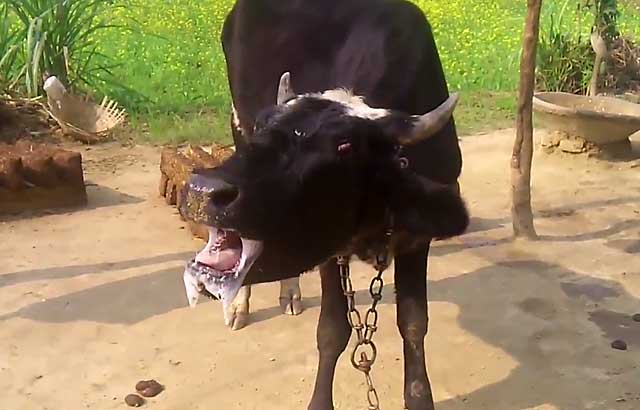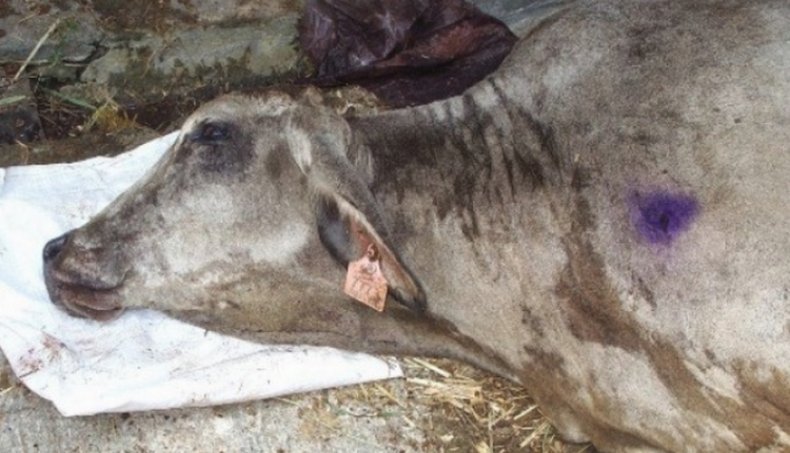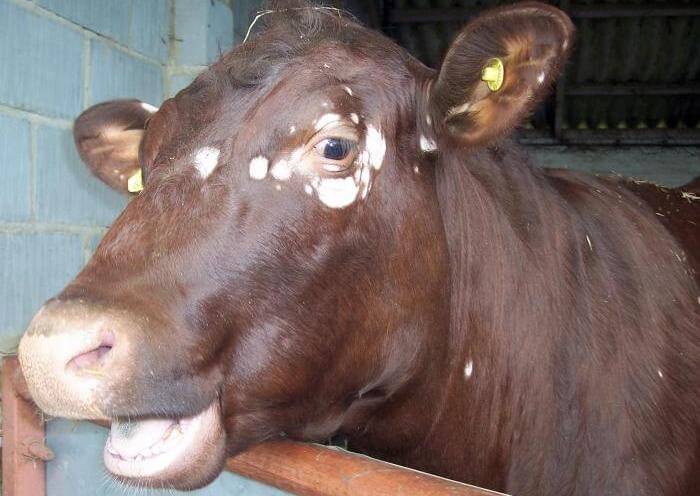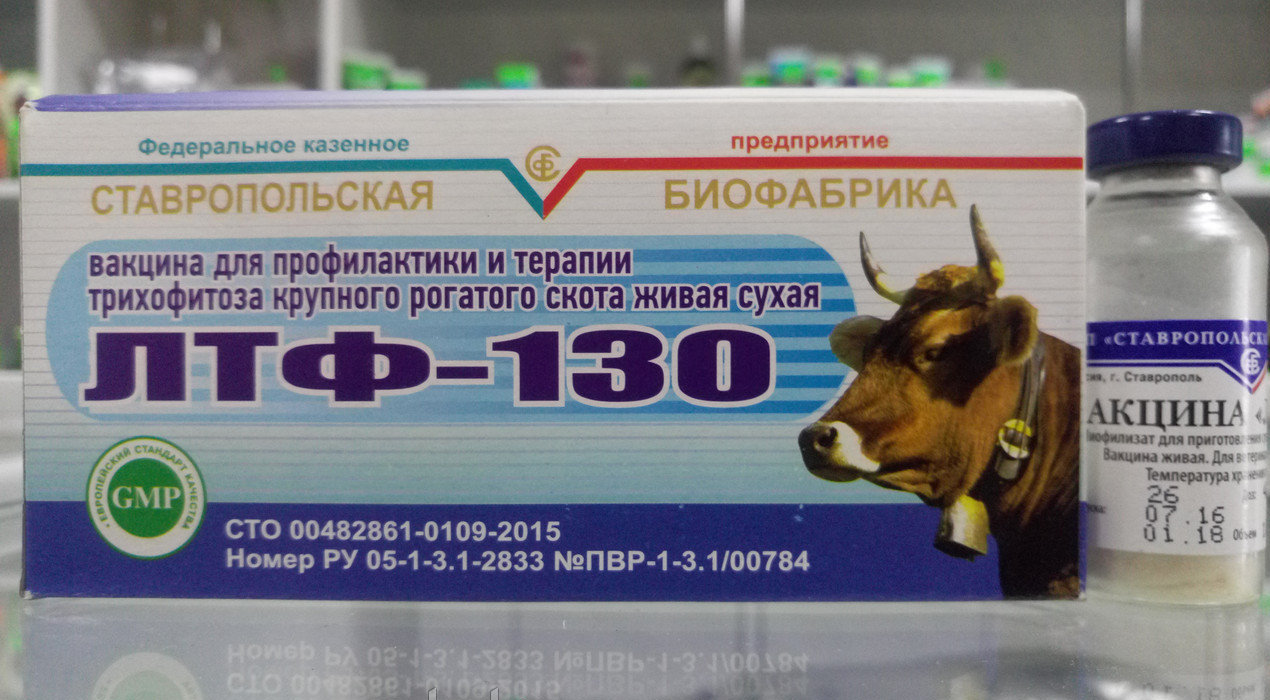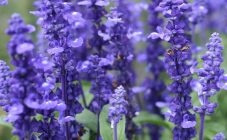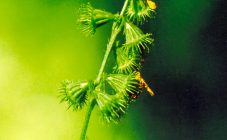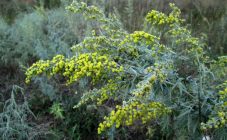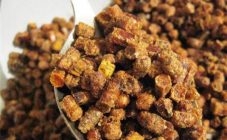Content:
Cattle (cattle), especially young individuals, are often attacked by viruses and infections. If the animal has strong immunity, it will be able to overcome the disease on its own. Otherwise, the farmer may lose all of the infected livestock.
Some types of diseases also affect people, which makes them especially dangerous.
Cattle care: basic rules
The main rule of caring for cows and calves is the most careful supervision of them. Only a caring attitude towards each animal will help in time to identify changes in behavior, decreased activity, appetite, which may indicate the onset of the disease. Preventive measures are equally important.
Their natural food is very important for animals - fresh grass. As soon as there is an opportunity to release the cows to graze, you should definitely use it. But in springtime, it is necessary to accustom animals to raw grass gradually, otherwise digestive problems are possible.
It is equally important for cows to have clean water, which should be available to them at any time of the day.
Barn design also plays an important role in calf care. For example, the cold concrete floor, common on many modern farms, should be covered with planks and straw. The most important condition for keeping livestock is keeping the premises clean. This is especially true for buildings for small calves.
Particular attention should be paid to young animals, cows, preparing or recently undergoing childbirth. Their immune systems are the most vulnerable.
At different stages of an animal's life, it needs vaccinations against diseases. You should not neglect or even refuse them: timely vaccination will save the cows from possible death, and the owner from unnecessary expenses.
Infectious diseases
Non-communicable cattle diseases are less dangerous than those caused by infection. The latter can lead to infection and extinction of the entire livestock. In addition, many of the microorganisms that cause cow diseases are dangerous to humans.
The most common cattle infections are:
- foot and mouth disease;
- rabies;
- brucellosis;
- leptospirosis;
- anthrax;
- lumpy dermatitis;
- trichophytosis.
Each of these diseases is dangerous in its own way, and has a number of symptoms peculiar only to it.
Foot and mouth disease
Symptoms of the disease:
- high temperature;
- the appearance of aft (small ulcers) located on the oral mucosa, on the udder, in bulls - in the scrotum;
- the release of frothy saliva, characteristic sounds (smacking);
- refusal of food.
Treatment:
- treatment of lesions with synthomycin ointment, furacilin solution, potassium permanganate;
- administration of anti-FMD serum;
- antibiotics for the prevention of secondary infection.
In case of loss of appetite, sick cows are fed with liquid food. In severe cases, it is necessary to inject the flour mash directly into the stomach, using a probe.
Rabies
Disease manifestations:
- photophobia;
- restless behavior, aggression;
- trembling, convulsions;
- slouch;
- fear of loud sounds;
- exhaustion;
- unsteady, wobbly gait.
The sick animal is isolated. Be sure to call a specialist. If the diagnosis is confirmed, the infected individual is destroyed.
Brucellosis
Symptoms:
- inflammation of the udder;
- endometritis;
- miscarriages, retention of the placenta;
- inflammation of the prepuce, testicles in bulls;
- development of joint diseases.
Broad-spectrum antibiotics are used as treatment.
Leptospirosis
Signs of the disease:
- lack of appetite;
- apathy;
- temperature rise;
- the appearance of jaundice (on the third day);
- swelling;
- heavy breathing, rapid pulse;
- the animal tries to lie down as soon as possible, it may fall;
- urination becomes difficult, becomes painful.
These same drugs help in the treatment of other dangerous viral diseases in livestock, such as emkar.
anthrax
The symptoms of this disease can vary depending on the type of disease.
Siberian can be manifested by the following signs:
- behavior change - aggression or apathy;
- high temperature;
- hard breath;
- swelling;
- decreased appetite;
- admixture of blood in the stool.
In the chronic course of the disease, the animal can live for about 3 months, while infecting others, in the acute course it dies in 3 days.
Treatment:
- the introduction of hyperimmune serum;
- intramuscular injection of Streptomycin or Penicillin;
- destruction of feed and manure left over from infected individuals.
If you suspect anthrax, you cannot do without a specialist.
Nodular dermatitis
Signs of the disease:
- the appearance of dense nodules on the skin, gradually dying off and falling off;
- temperature rise;
- decreased appetite;
- milk color change to pink;
- clouding of the cornea of the eye;
- increased salivation and mucus secretion.
Nodular dermatitis is rarely fatal. But infection with them occurs instantly, that is, the disease is almost guaranteed to affect the entire herd. No effective treatment has yet been found. In order to avoid contamination, it is necessary to keep the barn clean, provide the animals with vitamin-rich feed, and not purchase young animals from dubious suppliers.
Man and small ruminants are not threatened by infection with lumpy dermatitis.
Ringworm in cows
It is worth dwelling in more detail on trichophytosis, as the most common infectious disease of cattle. Both the owner of one cow and the farmer with a large herd can face this problem.
Trichophytosis in cattle is spread in the following ways:
- through streams of air with dust;
- with tactile contact;
- through feed, manure, litter with which the infected individual interacted;
- through agricultural implements.
The incubation period of the pathogen is up to 30 days.
Signs of ringworm in cattle are as follows:
- With the superficial course of the disease, spots appear on the skin of the animal, covered with gray crusts. The hair on the affected area becomes brittle, loses color. Its loss is observed. After healing, several new ones appear in the area of the first speck. The process is accompanied by severe itching of the skin.
- With deep (follicular) lichen in cows, the infection penetrates deeper into the skin, affects the hair follicles. Hairless, inflamed areas appear on the skin. In advanced cases, suppuration is observed. This form of the disease is common in calves.
- The atypical form of trichophytosis affects the area around the eyes.A gray dry crust appears on the affected areas, falling off along with the hair. After a while, the fur grows back. The disease is accompanied by severe itching, loss of appetite. In young calves, it is sometimes fatal.
Sometimes it happens that the calf loses the hair on the legs. This sign does not necessarily indicate a trichophytosis lesion. Perhaps the calf simply lacks vitamins and nutrients. This happens when the animal is early transferred to artificial feed, depriving it of natural milk. But only a veterinarian can give an exact answer to the question of why calves lose hair on their legs.
Trichophytosis treatment methods
If lichen in calves and cows is suspected, animals are isolated from the herd. It is advisable to transfer infected individuals to another room. Then a specialist veterinarian is invited to confirm the diagnosis and prescribe the appropriate treatment.
In the initial stages, ointments with terbinofine, clotrimazole and other components that inactivate the fungus will help to cure the disease. How to treat lichen in cattle? Yam Fungibak, Zoomikol, Fungin are considered effective.
For the speedy healing of the skin, keratolytic compounds are used, such as sulfuric and tar ointment.
For them, it is prescribed to use the same vaccine that was used for prophylactic purposes. The first injection is given at the beginning of treatment, the second after 14 days. Along the way, the above-described external means are used.
The room where animals are kept, as well as all working equipment, must go through the decontamination procedure.
Application of the LTF vaccine 130
The LTF 130 vaccine for cattle (the use of which is also possible for prophylactic purposes) has established itself as an effective tool in the fight against ringworm. A couple of weeks after vaccination with the drug, cows develop a stable (up to 7 years) immunity to the disease.
LTF 130 acts by stimulating specific immunity. The crusts in the affected areas become thinner, rejected. After about a month, the affected skin is covered with new hair. In the case of an advanced disease, a specialist, having examined the animal, can decide on a re-vaccination.
The drug is administered as follows:
- The vaccine powder is diluted with a sterile diluent for suspensions against dermatophytosis, saline or boiled water at the rate of 5.0 cubes of liquid 1 dose of the vaccine. This is done just before the introduction.
- The place where the drug will be injected is disinfected with alcohol.
- Like small animals that are injected into the hind leg, the cow is injected into the gluteus muscle. You can also inject into the neck.
- Revaccination is performed after 14 days. If necessary, repeat the procedure or inject a double dose at a time. Whether it is necessary to do this, the specialist will decide.
According to the instructions, the optimal dose for calves from 1 to 4 months is 5 ml, from 4 to 8 months - 8 ml. For animals from 8 months and more - 10 ml.
The drug is produced in the form of a dry powdery mass of gray color. Packaged in packs of 10, 20 and 40 doses.
Stored up to 12 months in a dry, dark place at temperatures above + 2 ° C.
The LTF 130 vaccine is contraindicated:
- Animals with fever. Therefore, it is necessary to measure it before vaccination.
- Cows in late pregnancy.
- Weakened and emaciated animals, including recent illnesses.
- Individuals with signs of ongoing diseases (in addition to lichen).
Animals before vaccination must be well fed, be in a stall.It is imperative to use sterile instruments, medical gloves, disposable syringes when working.
Advice from breeders
Experienced livestock breeders know how important it is for cattle health to keep their barns clean.
It is very important to change the litter in a timely manner, remove the manure. It is equally important to formulate the correct diet, in which all vitamins and minerals necessary for the animal will be present in proper quantities.
Once every six months, the prevention of helminthiasis is mandatory, which weaken the immunity of animals.
Vaccination of cattle quite successfully solves the problem of infectious infections. The main thing is to determine the presence of the disease in time and contact a specialist who will prescribe competent treatment.
